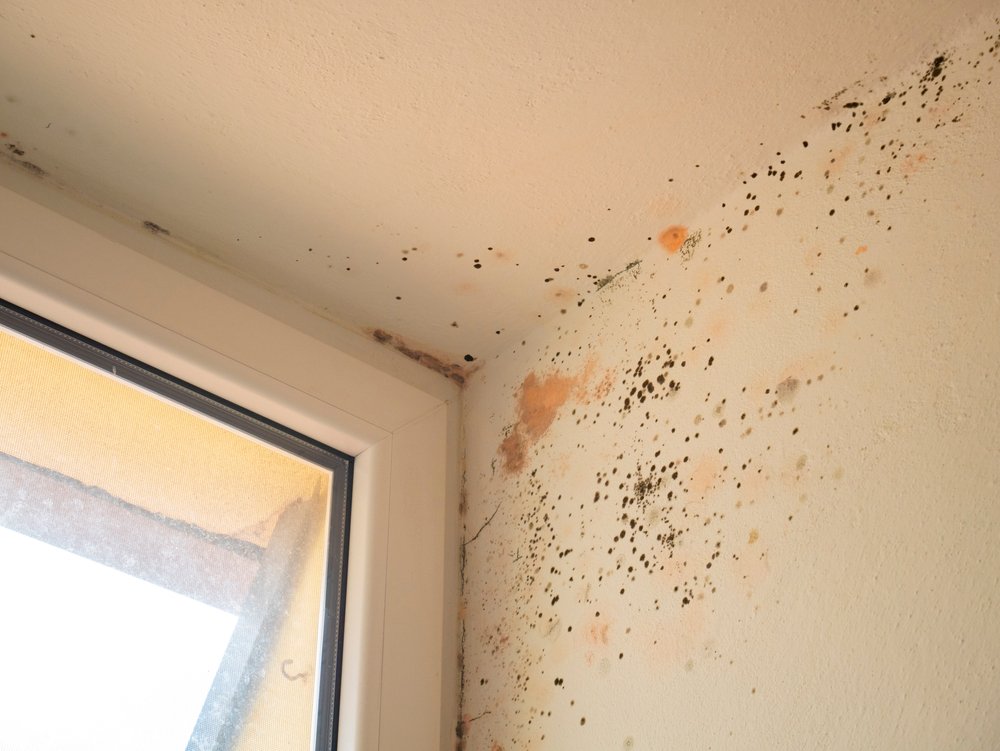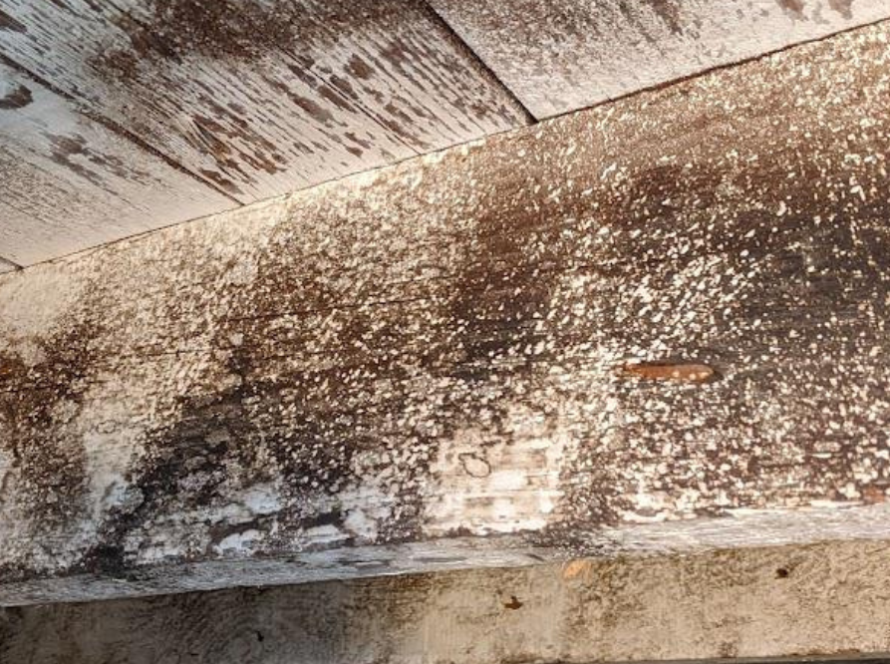Have you ever flung open your bathroom door and discovered that there was a yucky, pinkish-orange slime on all of your shower tiles, between the grout lines, or even on your sink interior? Well, then you’re not alone. Thousands of homeowners are plagued by this pesky issue and ask themselves What is this? Is it toxic, and most importantly, how to get rid of pink mold in the bathroom for good..
The good news? You don’t have to live with pink mold. In this comprehensive guide, we’ll break down everything you need to know from identifying and removing pink mold to preventing its return. Plus, we’ll share expert-backed strategies and solutions to help you keep your bathroom clean and mold-free for the long run. Let’s dive in!
What is the Pink Biofilm Called Serratia marcescens?
Serratia marcescens is a type of bacteria that appears as a pink, orange, or even red biofilm in damp environments, particularly in bathrooms. It is often mistaken for mold due to its slimy texture and rapid growth. This bacterium thrives in moist, humid conditions and feeds on fatty deposits found in soap, shampoo, and other bathroom products.
Unlike traditional molds that spread through airborne spores, Serratia marcescens spreads through water droplets and surface contact. While it is generally not dangerous for healthy individuals, prolonged exposure or inhalation of its particles can cause respiratory issues, urinary tract infections, or wound infections, particularly for those with weakened immune systems. Proper cleaning and preventative measures are essential to controlling its growth in your home.
What Causes Pink Mold?
Pink mold, commonly known as Serratia marcescens, is not actually mold but a type of bacteria. It thrives in warm, humid environments like bathrooms, where soap residue, shampoo, and moisture create the perfect breeding ground. Poor ventilation and infrequent cleaning can accelerate its growth.
Common Areas Where Pink Mold Grows
- Shower tiles and grout
- Toilet bowls and tanks
- Sink drains and faucets
- Shower curtains and doors
Is Pink Mold in the Shower Dangerous?
While pink mold is not as toxic as black mold, it can still pose health risks, especially for individuals with compromised immune systems, respiratory issues, or allergies. Direct contact can cause infections, especially if you have open wounds. Additionally, inhaling airborne particles can lead to respiratory problems.
Does Vinegar Kill Pink Mold?
Yes, vinegar is an effective natural solution for removing pink mold. White distilled vinegar contains acetic acid, which can break down and kill bacteria. To use vinegar for pink mold removal:
- Fill a spray bottle with undiluted white vinegar.
- Spray directly onto affected areas and let it sit for at least 10-15 minutes.
- Scrub with a brush to remove stubborn stains.
- Rinse thoroughly with warm water and dry the surface.
For severe cases, consider professional cleaning services to ensure complete eradication.
How to Get Rid of Pink Mold in the Bathroom
Eliminating pink mold requires a systematic approach:
Deep Cleaning
- Use a bleach solution (1-part bleach to 10-parts water) or a commercial cleaner.
- Scrub surfaces thoroughly, including grout lines and corners.
- Rinse and dry the area completely.
Use Natural Cleaning Alternatives
- Baking soda and water paste to scrub stubborn mold spots.
- Hydrogen peroxide spray to disinfect affected areas.
- Tea tree oil solution is a natural antimicrobial agent.
Prevent Future Growth
- Improve ventilation by using an exhaust fan or opening windows.
- Wipe down wet surfaces after each use.
- Regularly clean your shower curtain and bathroom fixtures.
- Consider professional mold services for customized solutions.
Improve Ventilation
- Install an exhaust fan to reduce humidity.
- Keep bathroom doors and windows open after showers.
Maintain Dry Surfaces
- Wipe down shower walls and tiles after each use.
- Use a squeegee to remove excess water.
Regular Cleaning Routine
- Clean bathroom surfaces at least once a week.
- Disinfect high-moisture areas frequently.
Fix Leaks and Plumbing Issues
- Check for leaks under sinks and around toilets.
- Consider working with a General Contractor for plumbing upgrades and mold prevention strategies.
Use Mold-Resistant Products
- Install mold-resistant shower curtains and liners.
- Use antimicrobial bathroom paints and sealants.
For long-term solutions, working with a General Contractor can help improve bathroom ventilation and plumbing to minimize moisture buildup.
Difference Between Pink Mold and Black Mold
| Feature | Pink Mold (Serratia marcescens) | Black Mold (Stachybotrys chartarum) |
| Appearance | Pink, orange, or reddish slimy film | Dark greenish-black, sometimes slimy or powdery |
| Type | Bacteria (not true mold) | Toxic mold (fungus) |
| Common Locations | Bathrooms, shower tiles, sinks, toilets, soap dishes | Damp walls, ceilings, grout, wood, drywall |
| Health Risks | Can cause urinary tract infections, respiratory issues, and wound infections in immunocompromised individuals | Produces mycotoxins that can cause severe respiratory issues, allergic reactions, headaches, and even neurological problems |
| Growth Conditions | Thrives in moist, warm environments with soap scum and organic residues | Grows in constantly wet environments with high humidity and poor ventilation |
| Spread Method | Spreads through water droplets and surface contact | Spreads through airborne spores |
| Removal Method | Can be cleaned with vinegar, bleach, or antibacterial cleaners | Requires professional remediation, especially if widespread |
| Danger Level | Low to moderate risk for healthy individuals | High risk, especially for those with respiratory issues or weakened immune systems |
Other Types of Mold You Should Watch Out For
While pink mold is a common issue, other types of mold can pose serious health risks. Here are some common molds found in bathrooms and their potential dangers:
Black Mold (Stachybotrys chartarum)
Black mold is one of the most dangerous types of mold found in homes. It appears as dark greenish-black patches and thrives in areas with excessive moisture, such as damp bathroom walls, ceilings, and tile grout. Black mold produces mycotoxins that can cause severe respiratory problems, allergic reactions, and even neurological issues. If you notice black mold in your bathroom, it’s crucial to address the moisture issue and seek professional mold removal services.
Green Mold (Aspergillus and Cladosporium)
Green mold is commonly found on bathroom walls, shower curtains, and damp ceilings. It often spreads quickly in humid conditions and can be harmful, especially to individuals with allergies or respiratory conditions. Some strains of Aspergillus produce mycotoxins that can lead to lung infections, asthma attacks, and allergic reactions. Regular deep cleaning and proper ventilation can help prevent green mold growth.
White Mold (Penicillium and Fusarium)
White mold typically appears on bathroom walls, wooden surfaces, and behind wallpaper in humid areas. It has a fuzzy or powdery texture and spreads rapidly, often indicating hidden moisture problems. While Penicillium is used in antibiotics, prolonged exposure to certain species can cause respiratory distress, sinus infections, and skin irritations. White mold should be removed promptly to prevent further contamination.
Yellow Mold (Serpula lacrymans)
Yellow mold, often called “house-eating mold,” primarily grows on wooden surfaces, drywall, and damp bathroom materials. It has a slimy or powdery appearance and is known for breaking down wood and structural materials, leading to potential property damage. Inhalation of yellow mold spores can also cause allergic reactions and breathing difficulties. Keeping humidity levels low and fixing leaks can prevent yellow mold from developing.
Red Mold (Acremonium and Fusarium)
Red mold is less common but can still appear in bathrooms, particularly on damp surfaces and behind wallpaper. Some strains, such as Acremonium, can be toxic and pose health risks when inhaled over time. Red mold often coexists with other mold types, making it essential to address any moisture problems to prevent its growth.
Brown Mold (Ulocladium)
Brown mold typically appears on water-damaged bathroom walls, ceilings, and tiles. It thrives in areas with high humidity and poor ventilation. Brown mold exposure can cause skin irritation, allergic reactions, and respiratory issues. Fixing leaks and improving airflow can help prevent brown mold infestations.
Conclusion
Pink mold in the bathroom is more than just an eyesore it thrives in moist environments and can pose health risks if left untreated. Understanding how to get rid of pink mold in the bathroom is crucial for maintaining a clean and hygienic space. Regular deep cleaning, proper ventilation, and moisture control are key to preventing its return. Using natural solutions like vinegar or seeking professional mold services can ensure long-term protection. By taking proactive steps, you can keep your bathroom mold-free and safeguard your home’s air quality.








